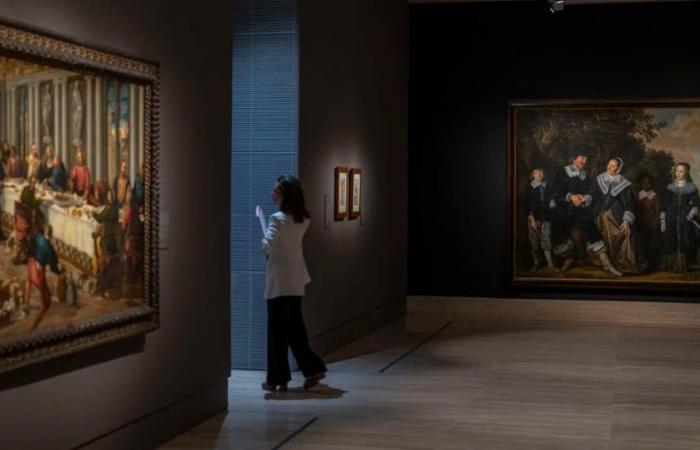
“I have been at the Thyssen for 19 years and I have never received direct or indirect instructions, suggestions or indications from a member of the Government regarding exhibition programming,” he expressed. Guillermo Solana, director of the art gallery. This Tuesday, the Madrid museum presents a new temporary exhibition with which it aims to address the delicate conversation of colonialism. In this case, focused on the art that crowns its rooms and hallways.
Colonial memory in the Thyssen-Bornemisza collectionswhich can be visited until October 20, is an exhibition that delves into the role that museums, and the canvases they house, have had in the context of the creation and legitimation of the eurocentric story. The art gallery will delve into the various themes and challenges of the 21st century, such as the climate crisis, gender equality, migration or the aforementioned decolonization, through 55 works from the museum’s historical collections.
The exhibition highlights the consequences of colonialism that began in the 16th century and its presence in Western iconography through idyllic images that mask the inequality and colonial violence of the time. To get it started, Thyssen has had to do a “necessary examination of conscience”as Solana indicated in the press conference held this Monday.
“This debate begins when some of those present here were not yet born and much less is it due to a current political situation, but in Spain everything is interpreted in a political key. Sometimes decolonization is presented as an attempt to introduce political biases into History, but it is quite the opposite,” said the director of Thyssen. The art gallery has insisted that the exhibition has nothing to do with the intentions of the Minister of Culture, Ernest Urtasunto eradicate colonialism in Spanish museums.
One of the main objectives of his portfolio was “overcoming a colonial framework anchored in gender or ethnocentric inertia” that have hindered “the vision of heritage, history and artistic legacy.” Solana ran for the European elections on Sumar’s list of candidates, although in last position and with no chance of being elected as an MEP. The artistic director of the art gallery has denied that this has influenced his decisions as head of the Thyssen and, in no case, in relation to the decolonization policy.
An exhibition is not organized in three months or six “and whoever says that arose from the current Government, or that the current situation has given instructions regarding the exhibition“Either he is ignorant or acts in bad faith, which is more common,” Solana stressed, adding that it is not innocent that the media automatically identify “decolonization to restitution”: “Decolonizing is not synonymous with restitution, but this is not innocent and this identification is promoted to cause alarm with an alleged squandering of heritage,” he concluded.
Beyond the political focus that is naturally ascribed to the exhibition, the Thyssen delves into various aspects associated with the fundamental issues of decolonization: extractivism and the appropriationthe racial construction of the other, the slavery and the domination colonialism, the escape to new “arcadias”, the body and sexuality and resistance and marronage. The exhibition is divided into six sections that start with the peripheral vision of View of the Carrera de San Jerónimo and the Paseo del Prado with procession of floats (1680), the canvas of Jan van Kessell III which shows various Africans in the center of Madrid in the 17th century.
The greatness of the exhibition goes beyond the discourse it aims to raise. The Thyssen has dissected the different types of violence that were carried out in that period. The art gallery addresses the discourse of those paintings that show and propose a exploitation of natural resources on occupied lands wave slavery of non-caucasian profiles that appear on the canvas.
There is also an analysis of those paintings that show objects belonging to the idiosyncrasy of those cultures exploited as a result of the artists’ travels. This includes works such as girl’s head (1893,1984), from Paul Gauguinwhich captured what he absorbed from his journey in Tahiti, or Study for the head of Nude with cloths(1907) Picasso. One of the central paintings of Colonial memory in the Thyssen-Bornemisza collections is Family group in a landscape (1645-1648), from Frans Hals. It shows a Dutch family with a young African who, presumably, became their slave.
It also analyzes the “racial hierarchization of the other” and “scientific racism” in which Europe claimed cultural supremacy with works such as Arabian horseman of Eugene Delacroix or the ethnographic work of Karl Bodmer. The idealized vision of new territories and the sexualization of non-Western women, a task that the aforementioned Gauguin exploited (and explored) in great detail, are shown with paintings such as Two female nudes in a landscape of Otto Mueller.





